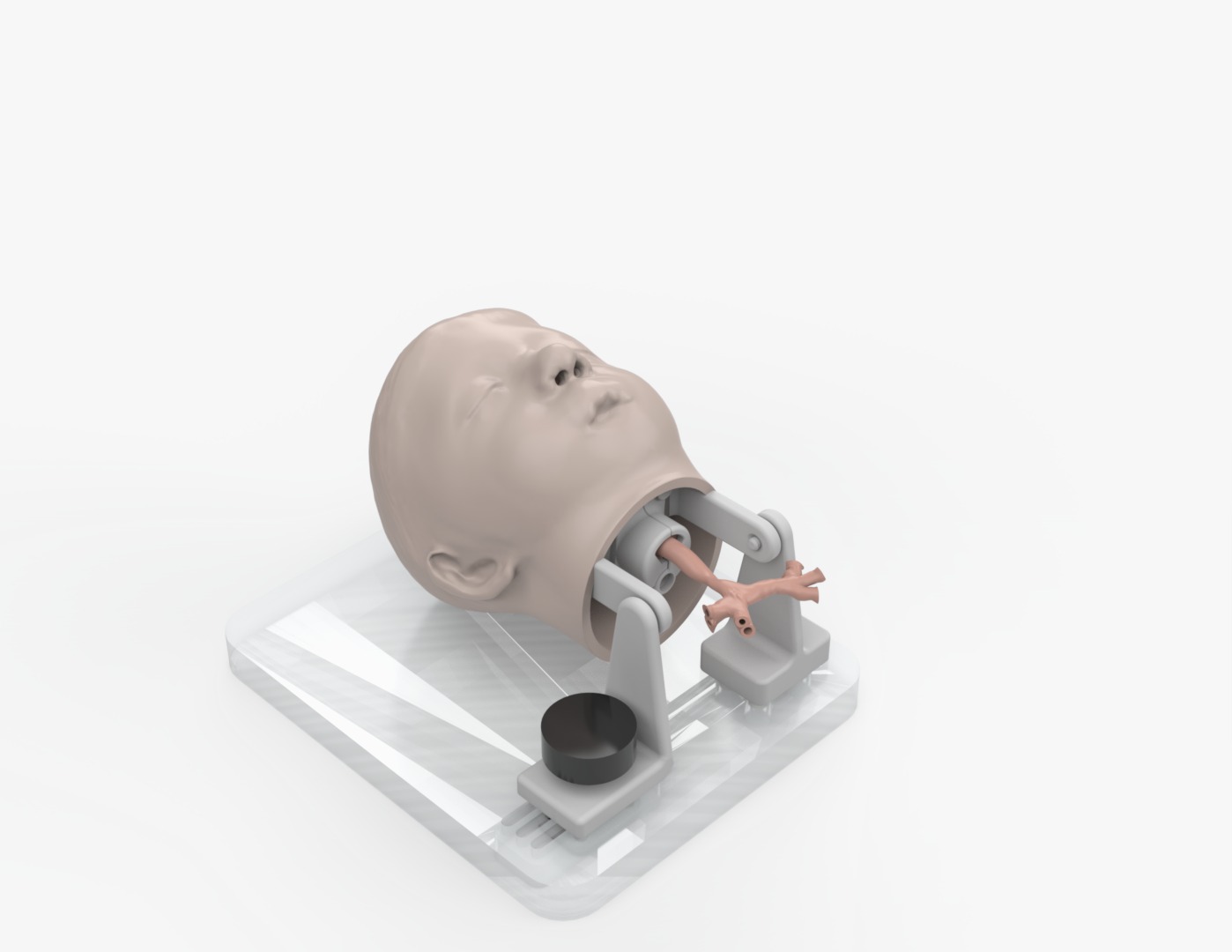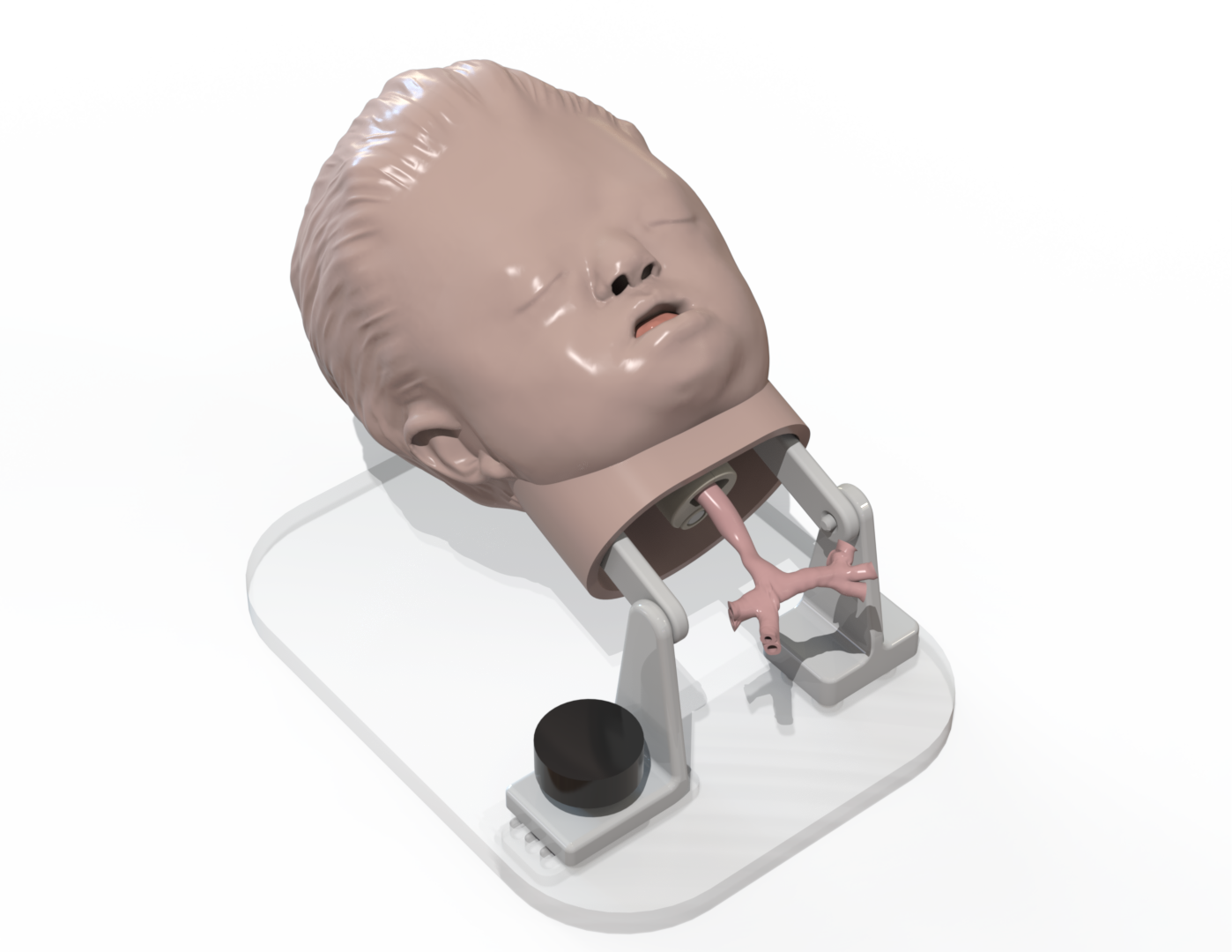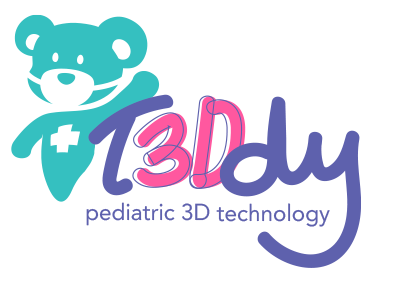Clinical simulation has a fundamental role since it involves the training of the medical staff on difficult or high-risk procedures without compromising the patient’s safety. Tracheal intubation in pediatric patients is more complicated than in adult patients because of the different anatomical conformation and the reduced dimensions of the lumen of the airways. In the case of pathologies that obstruct the passage of the instrumentation, the procedure becomes even more complex.
For this reason, within our laboratory, a series of high-realism simulators is being developed. Those Advanced Bronchoscopy Units (ABU) are characterized by different ages and pathologies involving the airways and the tracheobronchial tree. They are modular mannequins that make it possible the customization the simulation scenario based on the operators’ requirements by simply mounting the tracheal disease of interest and they are realized using reverse engineering and 3D-printing techniques using rigid plastics and silicones with different hardness.
ABU1 represents a 30-month-old patient affected by orofacial pathologies among which there is also the Pierre Robin sequence. The simulator task is the intubation of an expected difficult airway with nasal access using a flexible fiberscope.
ABU2 reproduces the pathological airways of a 19-month-old patient whose morbidity is caused by various deformations of the orofacial area that, in combination with the extremely reduced dimensions of the respiratory lumen, make the intubation extremely complex. In this simulator too, the task is the intubation of an expected difficult airway with oral or nasal access by means of a flexible fiberscope.
ABU3 has the pathological airways of a 19-mont-old patient too but represents an unexpectedly difficult airway since there are no pathological traits in its face. The task is intubation by means of a rigid bronchoscope once the mannequin has been placed in the correct sniffing position. Thanks to the presence of a pad that is easily replaceable once used, ABU3 can be also used as a task trainer for the tracheotomy procedure.
All the mannequins of the series are compatible with a set of easily replaceable tracheas representing different pathophysiological statuses: healthy, tracheostomized, stenotic, tracheoesophageal fistula.



